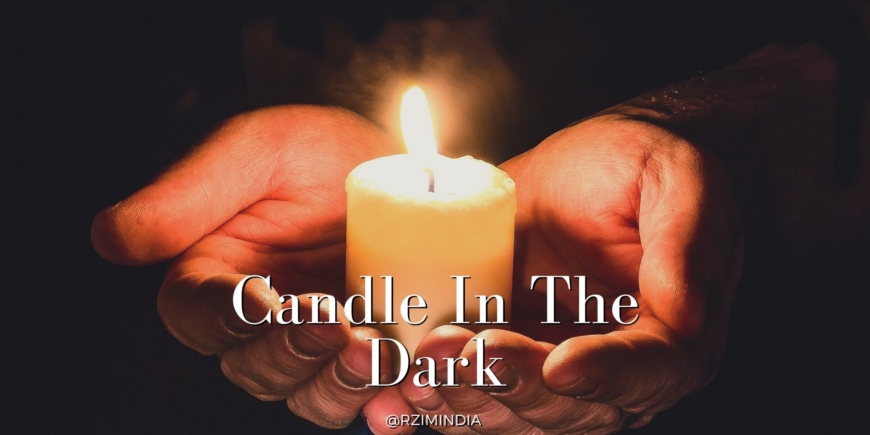Candle In The Dark
‘Faith is the bird that feels the light when the dawn is still dark’,
said Rabindranath Tagore
Holding out a candle light to affirm solidarity against the darkness brought by coronavirus is symbolic of hope and change. Or is it more? There is a spirituality that is hard to divorce from culture. And that may not be a bad thing in itself.
Just as a light that is purely physical might not help beyond the physical reality, neither could a mystical light at the end of all effort, offer much certainty. However, Jesus is presented as the true light that gives light to everyone. Scripture refers to darkness as (a) a lack of knowledge and/or (b) evil and wickedness.
The pursuit of light could be compared to an image of a moth and the stars. Alister McGrath in his book, ‘Glimpsing the Face of God’ elucidates this concept very well. The moth has an inbuilt attraction for light and in the night, finds itself pursuing the stars. But now, the modern world has given rise to a strange problem for the moth, which finds itself drawn to man-made candlelight, and burning in its flame. Worse still, moths are attracted to huge city lights, which end up vaporizing them. So, it is possible to assume that being drawn to a counterfeit light source can be detrimental.
To throw some light into our darkness, a strange star showed up in history. Without drawing attention to itself, it led astrologers and magicians from Persia to a person – the very God who entered our world. In the end, one cannot worship a light or even a star. We need to look beyond and see the God who made the star. Time, space, numbers, or even light is not absolute. Only God is. In the Bible, we read that ‘God is light’, but the reverse is not true – i.e., light is not God.
If light is about knowledge, the gospels present Jesus as a God of revelation. The God who stepped into this world in flesh and blood to be known by us. John records his testimony: “No one has seen God, except the only begotten of the Father, who has made Him known”. In other words, Jesus has explained to us what the Infinite One is like.
If light is about freedom from our dark and deviant behaviour, Jesus came into this world as a redemption for our wickedness. The message that came when Jesus appeared on this planet was: “He will save people from their sin”.
The knowledge of God and salvation in Jesus Christ will light up the darkness in our minds and hearts. As Paul writes to the Corinthian church: “For God, who said, ‘Let light shine out of darkness,’ made his light shine in our hearts to give us the light of the knowledge of God’s glory displayed in the face of Jesus Christ”.
To connect the dots, this day (5th April, 2020, Palm Sunday) commemorates the journey of Jesus into Jerusalem 2000 years ago – the crowds from their balconies as well waved branches of trees. They were looking for a political Saviour. But He was keen on addressing the corruption within every human heart – the Roman Governor, the religious priests and the common person alike.
In the midst of the coronavirus pandemic, let us not miss the deeper malaise within every one of us. We need a Saviour and someone who will address the real and deep issues of our lives. Jesus stepped into our situation and carried the burden of our sin, dying on the cross for us.
Interestingly, but not surprisingly, onlookers of the crucifixion testified that the world turned dark at noon when Jesus died. Thallus, a 1st century historian from Samaria is reported to have said: “…in the time of Tiberius Caesar, at full moon, there was a full eclipse of the sun from the sixth hour to the ninth— confirming the historical allusion to it in Mark’s gospel. On the third day, Jesus rose again from the dead. There is hope beyond death.
A famous prayer from an Indian sage goes this way:
“Lead me from Untruth to Truth
Lead me from Darkness to Light
Lead me from death to Immortality”.
Jesus said: “I am the way, the Truth and the Life” (John 14:6),“I am the Light of the world” (John 8:12), and “I am the resurrection and the life” (John 11:25).
More than two millennia ago, Plato said: “We can easily forgive a child who is afraid of the dark; the real tragedy of life is when men [& women] are afraid of the light”.

